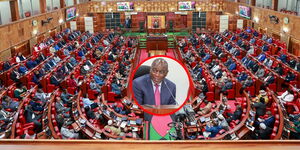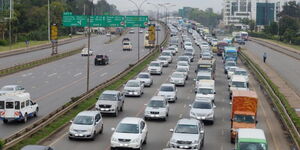EXPLAINER : Why Borehole Water Could Be Slowly Harming Your Health
For many Kenyans, borehole water has become the go-to solution as piped water grows scarce in cities like Nairobi and rural households alike.
The assumption is that groundwater, drawn from deep beneath the earth, is naturally cleaner and safer than surface water. But experts warn that untreated borehole water can carry serious health risks that often go unnoticed until it is too late.
Here are some of the reasons you need to consider before getting too comfortable with the consumption of borehole water.
Fluoride Contamination
According to experts, in volcanic regions such as Nairobi and the Rift Valley, borehole water naturally contains high levels of fluoride. While small amounts protect teeth, excess fluoride causes dental fluorosis, leaving children with brown-stained teeth. Over time, it may even harden bones abnormally, leading to skeletal fluorosis, a painful and disabling condition.
Microbial Contamination
According to Geoconsultants and health experts, poorly drilled or shallow boreholes located near pit latrines, septic tanks, or leaking sewers can allow bacteria like E. coli to seep in. Consumption of such water leads to outbreaks of diarrhoea, typhoid, and cholera, especially in densely populated estates where many residents rely on shared boreholes.
Nitrate Pollution
Beyond microbes, nitrate pollution from fertilisers and agricultural runoff is another silent threat. Experts say high nitrate levels in drinking water can cause “blue baby syndrome” in infants, a condition that reduces oxygen in the blood and can be fatal if untreated. This often happens in farming regions where boreholes are located near farmlands.
Mineral Build-up
According to research published by the Texas A&M University System on Extension of Water Resources and Minerals, borehole water often contains high concentrations of iron, manganese, and salts.
These minerals do not just cause unsightly stains on laundry and bathroom fixtures; in excessive amounts, they can contribute to high blood pressure, kidney strain, and other long-term health concerns.
The geology of a location also determines whether borehole water contains dangerous trace metals such as lead and arsenic.
Though less common, exposure to these heavy metals has been linked to liver and kidney damage and even cancer. Unlike bacteria, these elements cannot be boiled away, meaning only proper treatment systems like reverse osmosis can make the water safe.
What To Do
Health concerns aside, the boom in private boreholes poses environmental risks. Nairobi, for example, now has thousands of unregulated boreholes, leading to a rapid drop in groundwater tables. Experts warn that over-pumping could cause the ground to sink or boreholes to dry up, leaving households and estates scrambling for alternatives.
The problem is worsened by the fact that most Kenyans do not test their borehole water regularly. Many assume that clear, odourless water is safe. Yet laboratory testing has repeatedly shown contamination in samples across Nairobi, Nakuru, Kisumu, and other towns. Experts recommend testing at least once a year, but most borehole owners never do so after drilling.
Treatment
Treatment is possible but often overlooked. Depending on the results of testing, borehole water can be purified using chlorine, UV treatment, activated carbon filters, or advanced methods like reverse osmosis. “The first step is always a water quality test. Without it, you are drinking blind,” warns Innercore Geoconsultants, a firm that advises on borehole safety.
Ultimately, borehole water is not inherently bad; it remains a lifeline for millions of households and businesses. But without regulation, regular testing, and treatment, what looks like a solution could become a hidden health crisis.












